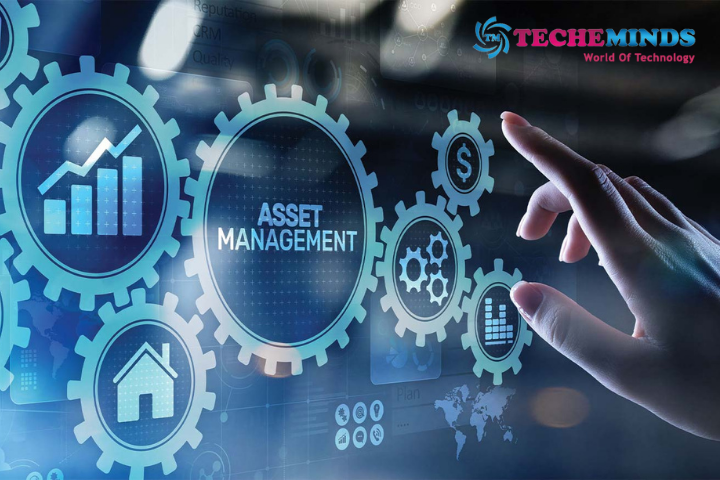What is Asset Management? Easy Guide, Jobs & Software Tools

All kinds of businesses have assets, and this could be anything from computers, machines, vehicles, software, or digital files. Assets are assets, and asset management is the practice of managing them. Knowing how to utilize good asset management can help companies easily save money, reduce the chance of confusion, and keep the business advancing.
Table of Contents
What is Asset Management?
Asset management is knowing what a company has and where it is or how it’s used. This can pertain to physical items like equipment or even things that are digital, such as documents or videos.
It helps your businesses:
- Know what assets they have
- Keep things in good working condition
- Avoid unnecessary costs and losses.
- Make smart decisions about buying or selling.
Without asset management, things get lost, broken, or wasted.
What is Digital Asset Management?
Digital asset management is about managing digital files, like images, videos, logos, or documents.
For example, a company could have hundreds of photos or videos that it is using for marketing on multiple platforms. If the company had a sound digital asset management system to store, search, and use images and videos in a timely manner, it would have a significant advantage.
It helps teams:
- Save time by quickly finding the file.
- Prevent using the incorrect version.
- Keep everything in one secure place.
Asset Management Software
Manually managing everything takes time. This is why businesses use software for asset management. This software records all of the assets and keeps them in one system. The software will automatically update things and send reminders for repairs or updates.
For example, if a company has 200 laptop computers, the software will tell the company who has each laptop, when that laptop was purchased, and when it will require service.
Benefits of asset management software:
- Less manual work
- Less room for mistakes
- More control over assets
- It saves money and time
What is Asset Liabilities Management?
In banking and financial institutions, there is a language term: asset and liabilities management.
This means ensuring that the monetary resources a company has (assets) and the monetary owed by that company (liabilities) match up. If it goes well, it is wise financial management and reduces monetary distress, which will stabilize the business.
Careers in Asset Management
Asset management careers are continually growing. There are many companies looking for people who can manage assets well. The places of employment are not just big banks and financial institutions. They are also in IT companies, manufacturing companies, hospitals, and schools.
A few typical asset management jobs include:
- Asset Manager
- Digital Asset Specialist
- IT Asset Coordinator
- Equipment Tracker
- Facilities Manager
These jobs require people with good organizational skills and knowledge of basic software.
Why Asset Management is Important
Managing your estate is like maintaining a clean house. Once you know what you have, where it is, and how it’s working, it’s easier.
Here’s why it matters:
Save Your Money
When you have an inventory of what you own, it eliminates the “double buying” of things again. Also, you will end up getting repairs done before they become a much larger expense. Sure, you could replace the sink if it breaks down. It certainly would be cheaper to fix the faucet!
Nothing Goes Missing
Things like tools, laptops, or machines can be lost. With asset management, you know where everything is and who has it.
Everything Stays Curious
No more messy records and guesswork. Purchase date, condition of item, and location are all held in one place.
Tasks Get Completed Quickly
Teams finish tasks faster when they can quickly access everything they need. No time looking for something you’ve lost.
Repairs Happen on Time
You’re alerted when equipment is scheduled for service. You don’t get surprised, and everything keeps running.
You Make Better Decisions
Is it time to sell, upgrade, or fix something? Asset data helps you make that choice with confidence.
Helps You Follow Rules
Some businesses have to show records for audits or inspections. Good tracking of assets makes this straightforward and easy.
Asset management saves you time, cuts waste, and helps your business run better—every day.
The Future of Asset Management
Asset management has become more intelligent. Tools utilize the internet, sensors, and applications to track things in real time. You can see where your delivery van is when your machine is scheduled for service or how much free space is left in your warehouse, all from your computer or smartphone.
As businesses continue to grow, the use of digital tools to manage assets will become more commonplace.
Final Thoughts
Asset management assists businesses in taking care of what they own. A laptop, a car, or a video file; when an owner knows how and where an asset is being used, they are able to save time and/or money.
If you want to get into this field, there is plenty out there in terms of asset management jobs in many sectors. We also have asset management software, or if you own a business, asset liabilities management is another way for you to manage your affairs
Also Read : Account Control In Your Business, Tools That Will Help You
